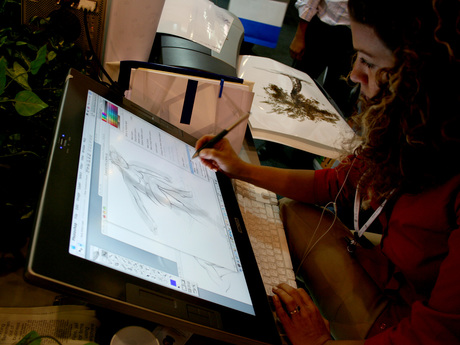Tablets invading the enterprise?

The world is experiencing a historic influx of personal devices. But new ‘personal’ devices aren’t staying at home - they’re coming into the workplace, and it’s giving some enterprise IT departments cause for concern as they confront the ways this bring-your-own-device (BYOD) trend complicates one of their primary duties: data protection.
To put this trend in perspective, Nielsen reported in March that 31% of Australian households contain at least one tablet, and Roy Morgan Research has just published results showing that the proportion of Australian businesses using tablets is set to increase from 23 to 31% over the next 12 months. Furthermore, the number of tablets used in businesses will grow by at least 50%.
BYOD is pervasive whether enterprise decision-makers have embraced it or not. In fact, research by Harris Interactive in the US reveals that 81% of employees already use personal devices at work.
BYOD is an affordable way for connected, data-driven employees to work around corporate IT, and next-generation smartphones and tablets offer them invaluable productivity and file-collaboration applications.
So, for all of its advantages, why does BYOD cause such anxiety within organisations, particularly since using mobile devices in the enterprise became standard years ago?
The big IT dilemma with tablets and other personal devices is the complexity and dynamism of data protection. The days of company-issued Blackberries are long gone. Now, as privately owned tablets and other personal devices log on to corporate networks and exchange company files, it becomes harder for IT departments to guarantee the accessibility, availability and protection of data stored outside their own infrastructure.
Data is moving between secure corporate servers and unregistered personal devices, and even into third-party storage services like DropBox, which makes it difficult to protect sensitive information and leaves it vulnerable to corruption; or worse, leakage to malicious hackers or fraudsters.
Corporate data obtained through tablets and smartphones, including employee information, text messages, emails and confidential documents, is incredibly valuable for cybercriminals and incredibly damaging to organisations and their customers. The threat of mobile data leakage is very real and is recognised by a significant proportion of BYOD users. A recent Forrester survey found that nearly 40% of professionals were concerned about security on their devices.
Shockingly, further research by technology advocacy group ITIC found that 71% of US businesses that permitted BYOD had no specific BYOD security or support policies, and we can probably extrapolate that to similar findings in Australia.
Despite the risks of personal device use, enterprises shouldn’t push back. Instead, they should view BYOD as a productivity driver and plan and adapt with policies that provide seamless and secure ways to create more interconnected workplaces.
That means the role of IT must change. IT must become an enabler and ensure data is secure and available regardless of where and how it is stored and accessed. Easier said than done?
There are immediate steps enterprise decision-makers can take to create businesses that are primed for accommodating personal tablets and other devices without sacrificing business continuity and security.
The first measure is to put in place policies and procedures that account for personal devices accessing the company network. These should include regular security audits to ensure mobile-related vulnerabilities are addressed and up to date. Additionally, business continuity plans should be updated to reflect BYOD realities. For example, employees should have an easy way to report when their devices are lost so that IT can block access to company networks and wipe sensitive data clean.
It’s also key that enterprise decision-makers seek out simple and comprehensive data solutions that help integrate personal device use and traditional IT, without complicating workflows for their employees. These include mobile device management (MDM) systems, which help IT regulate devices accessing corporate data, and central management tools that monitor all devices connected to the network. Additionally, employees need access to enterprise-friendly, file-sharing, storage and collaboration tools, so they aren’t motivated to seek insecure, third-party alternatives like DropBox. Storage, backup and business continuity solutions should all be aligned with BYOD to create a seamless IT environment.
As tablet and personal device use is now so pervasive, as well as being a productivity asset to the workforce, enterprises must focus on making BYOD secure. The implication for IT and all enterprise decision-makers is clear: data must be available, accessible and protected, regardless of where, when and how it is accessed. With that in place, IT can keep calm and carry on as the tablets come marching in.
IoT demands alternatives as 3G sunset looms
The impending 3G shutdown is a daunting prospect for organisations across ANZ that rely on...
Broadband measurement shows online gaming stacks up
The ACCC's latest Measuring Broadband Australia report has found that consumer connections to...
BlackBerry stopping one cyber attack per minute
A new report from BlackBerry's Threat Research and Intelligence team highlights the...







